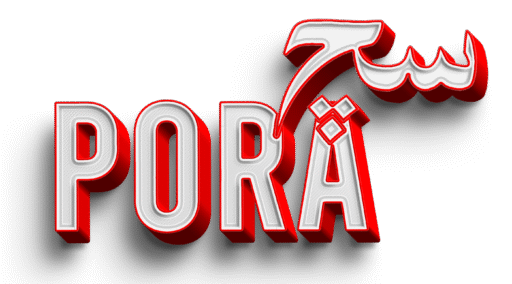World War I, often called the “Great War,” was one of the deadliest conflicts in human history, claiming the lives of an estimated 16 to 20 million people, including soldiers and civilians. While the war’s roots were deep and complex, involving long-standing tensions across Europe, it was the action of a single individual—a 19-year-old Bosnian Serb nationalist named Gavrilo Princip—that served as the immediate spark. On June 28, 1914, Princip assassinated Archduke Franz Ferdinand, the heir to the Austro-Hungarian throne, and his wife Sophie in Sarajevo. This event set off a chain reaction that engulfed the world in war. In this article, we’ll explore Princip’s background in detail, drawing from available historical records, and connect it to the broader causes, progression, and consequences of World War I.
The Man Behind the Trigger: Gavrilo Princip’s Life and Motivations
Gavrilo Princip was born on July 25, 1894, in the remote village of Obljaj in western Bosnia, then part of the Austro-Hungarian Empire. He came from a poor Bosnian Serb peasant family, one of nine children, though only three survived infancy due to harsh living conditions and diseases like tuberculosis, which plagued the region. Princip himself was frail and sickly as a child, suffering from tuberculosis, which made him appear small and unassuming—hardly the image of a world-altering revolutionary.
Growing up in a multi-ethnic area under Austro-Hungarian rule, Princip was exposed to rising Serbian nationalism. Bosnia had been annexed by Austria-Hungary in 1908, an act that fueled resentment among Serbs who dreamed of a unified South Slavic state (Yugoslavia) free from foreign domination. As a teenager, Princip moved to Sarajevo for education but was expelled from school in 1912 for participating in anti-Austrian protests. He then traveled to Belgrade, Serbia, where he immersed himself in nationalist circles.
Princip joined the secret society known as the Black Hand (official name: Unification or Death), a Serbian terrorist group founded in 1911 that aimed to liberate South Slavs from Austro-Hungarian control through violent means. He was also affiliated with Young Bosnia, a loosely organized group of Bosnian students and revolutionaries sharing similar goals. Trained in marksmanship and bomb-making, Princip was radicalized by the idea of sacrificing himself for the cause. Historical accounts describe him as idealistic, influenced by literature on tyranny and revolution, and driven by a deep hatred for the Austro-Hungarian monarchy.
Despite his youth and limited resources, Princip’s resolve was unwavering. He saw the Archduke’s visit to Sarajevo as a perfect opportunity to strike a blow against oppression. After the assassination, he was arrested immediately and tried in Sarajevo. Due to his age (under 20), he escaped the death penalty and was sentenced to 20 years in prison. He died on April 28, 1918, in Theresienstadt prison from tuberculosis-related complications, never witnessing the full extent of the war he helped unleash. Princip’s life was short and obscure, but his act became a pivotal moment in history.
The Spark: The Assassination of Archduke Franz Ferdinand
The assassination occurred on June 28, 1914, during Franz Ferdinand’s official visit to Sarajevo, the capital of Bosnia. The date was symbolically charged—it was the anniversary of the Battle of Kosovo (1389), a cornerstone of Serbian national identity, and also St. Vitus Day. The Black Hand had plotted the attack, arming a group of six young assassins, including Princip, with pistols, bombs, and cyanide pills for suicide if captured.
The plan nearly failed multiple times. Earlier that morning, around 10:15 a.m., assassin Nedeljko Čabrinović threw a bomb at the Archduke’s car, but it bounced off and exploded under a following vehicle, injuring bystanders but sparing the royal couple. Franz Ferdinand continued his schedule but later decided to visit the wounded at the hospital. Due to a fateful wrong turn by the driver, the car stalled directly in front of Princip, who was eating a sandwich at a nearby café. Seizing the moment, Princip stepped forward and fired two shots at close range, killing the Archduke and Sophie.
This “comedy of errors,” as some historians call it, was no accident in intent—it was a deliberate act of terrorism aimed at destabilizing the empire and promoting Yugoslav unity. Austria-Hungary blamed Serbia for supporting the assassins, setting the stage for escalation.
The Powder Keg: Underlying Causes of World War I
While Princip’s bullets were the immediate trigger, World War I was not caused by one man alone. Europe in 1914 was a tinderbox of tensions, often summarized by the acronym M-A-I-N: Militarism, Alliances, Imperialism, and Nationalism.
- Militarism: European powers, especially Germany and Britain, engaged in an arms race, building massive armies and navies. Germany’s naval expansion challenged British dominance, heightening suspicions.
- Alliances: Secret pacts divided Europe into two camps—the Triple Entente (Britain, France, Russia) and the Triple Alliance (Germany, Austria-Hungary, Italy). An attack on one could drag all into war.
- Imperialism: Competition for colonies in Africa and Asia created rivalries, such as between Britain and Germany.
- Nationalism: Ethnic groups, like the Slavs in the Balkans, sought independence, clashing with empires like Austria-Hungary.
The assassination exploited these fractures. Austria-Hungary, with German backing (the “blank check” assurance), issued a harsh ultimatum to Serbia on July 23, 1914, demanding investigations and suppression of anti-Austrian activities. Serbia’s partial refusal led to Austria’s declaration of war on July 28, activating the alliance system.
The Execution: How the War Unfolded
What began as a regional conflict ballooned into a global war lasting from 1914 to 1918. Here’s a timeline of key events:
| Date | Event |
|---|---|
| July 28, 1914 | Austria-Hungary declares war on Serbia. |
| August 1–4, 1914 | Germany declares war on Russia and France; invades Belgium, prompting Britain to join. |
| August–September 1914 | Battle of the Marne halts German advance on Paris; trench warfare begins on the Western Front. |
| October–November 1914 | First Battle of Ypres; stalemate solidifies. |
| February 1916–December 1916 | Battle of Verdun: Over 700,000 casualties in a grueling attritional fight. |
| July–November 1916 | Battle of the Somme: More than 1 million casualties, including 60,000 British on the first day. |
| April 6, 1917 | United States enters the war after German U-boat attacks and the Zimmermann Telegram. |
| November 7, 1917 | Bolshevik Revolution in Russia leads to armistice with Germany (Treaty of Brest-Litovsk, March 1918). |
| March–July 1918 | German Spring Offensive fails; Allied counterattacks begin. |
| November 11, 1918 | Armistice signed; fighting ends. |
The war featured brutal trench warfare, new technologies like tanks, poison gas, and machine guns, and involved over 70 million military personnel from across the globe. Princip’s act indirectly led to this carnage by triggering the alliances.
The Aftermath: Results and Long-Term Consequences
World War I’s toll was immense: Approximately 8.5 million military deaths, 13 million civilian deaths from war, famine, and disease (including the 1918 Spanish Flu pandemic), and widespread destruction. Economically, it bankrupted nations and caused hyperinflation in Germany.
Politically, four empires collapsed: Austro-Hungarian, German, Ottoman, and Russian. The Treaty of Versailles (1919) redrew Europe’s map, imposed harsh reparations on Germany, and created the League of Nations to prevent future wars—but it sowed seeds for World War II by humiliating Germany. New nations emerged, like Yugoslavia (ironically fulfilling some of Princip’s dreams), Poland, and Czechoslovakia. The war also accelerated women’s rights, as they entered the workforce, and sparked revolutions, including the Russian Bolshevik takeover.
Socially, it shattered optimism, leading to the “Lost Generation” and cultural shifts in art and literature. The Middle East was reshaped by the Sykes-Picot Agreement, contributing to ongoing conflicts. In essence, one man’s bullet not only killed two people but unleashed forces that killed millions and redefined the 20th century.
In conclusion, Gavrilo Princip’s assassination was the catalyst that exposed Europe’s fragilities, turning a local grievance into a global catastrophe. While he acted for nationalist ideals, the war’s horrors far exceeded any envisioned outcome, reminding us how individual actions can alter history’s course.















